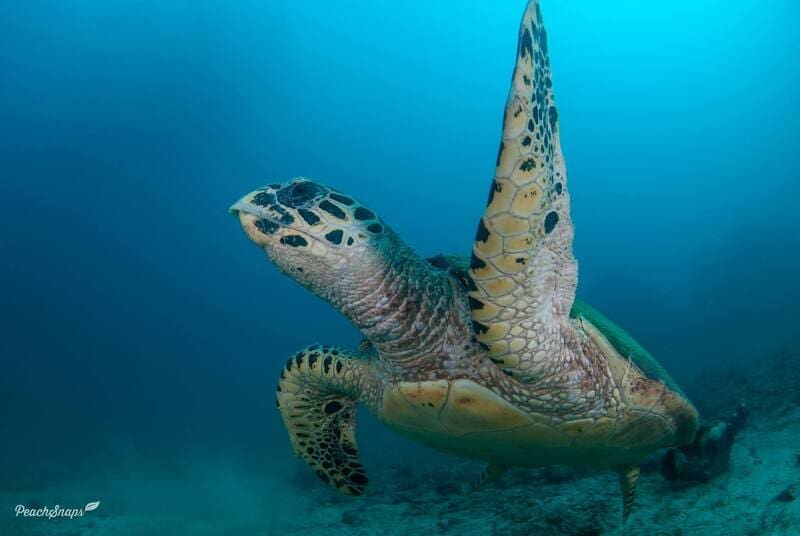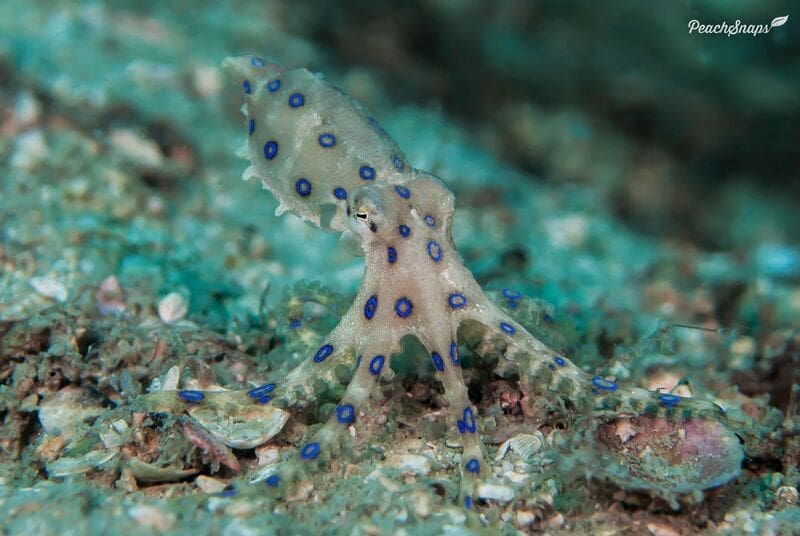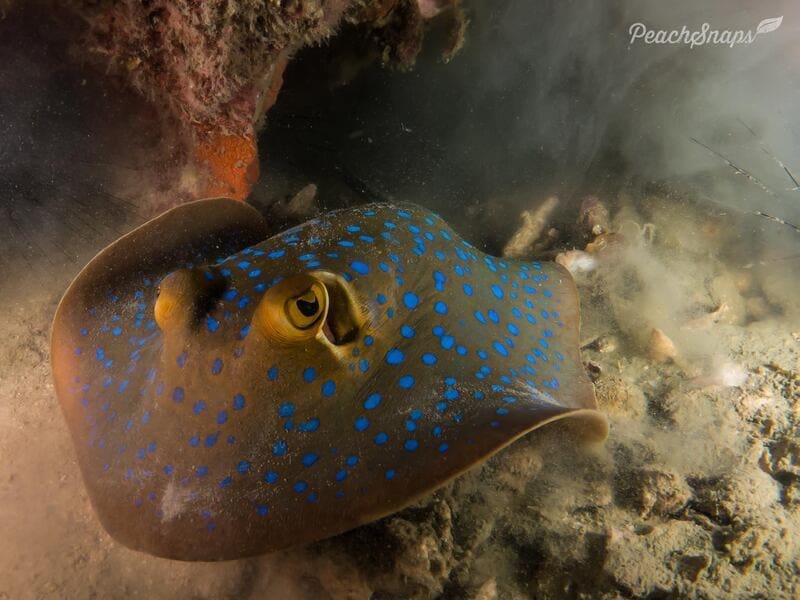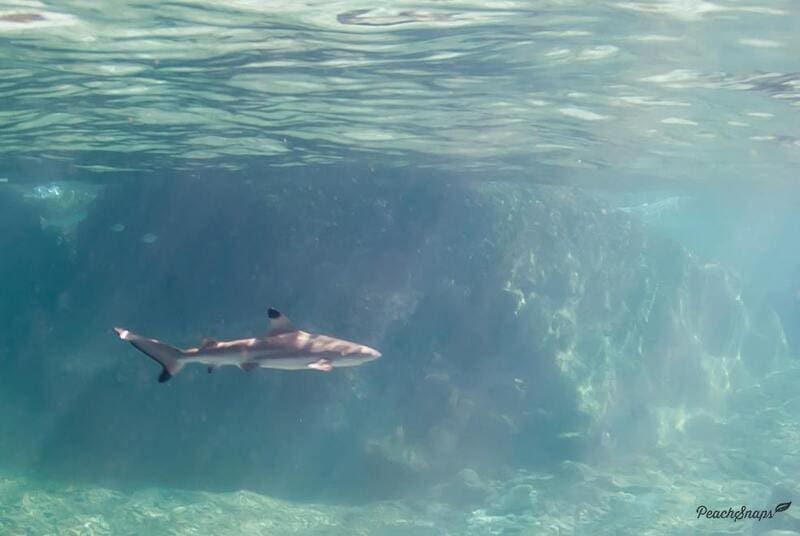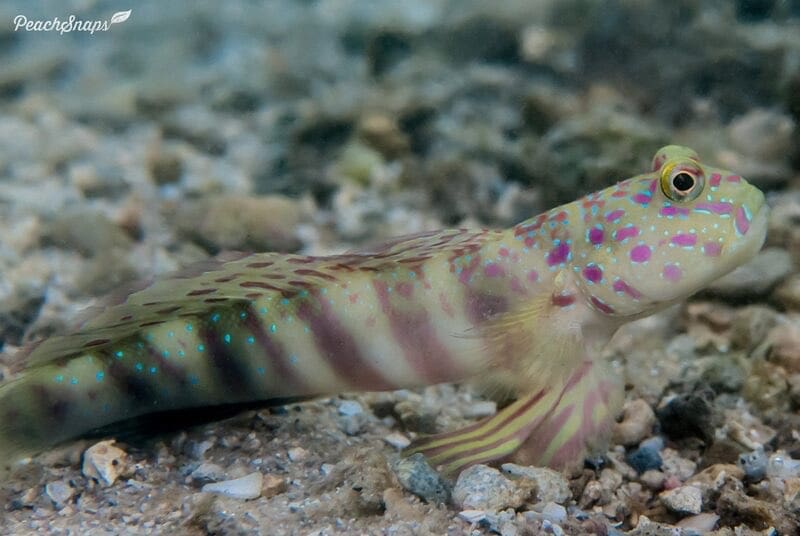The saddleback anemonefish (Amphiprion polymnus), often referred to as the saddleback clownfish, is a distinctive and fascinating species known for its unique appearance and its close relationship with sea anemones. Beloved by divers and aquarium enthusiasts alike, this clownfish stands out for its striking black and white coloration and its charming behavior. Whether spotted in the wild or kept in a home aquarium, the saddleback anemonefish is a species worth getting to know.
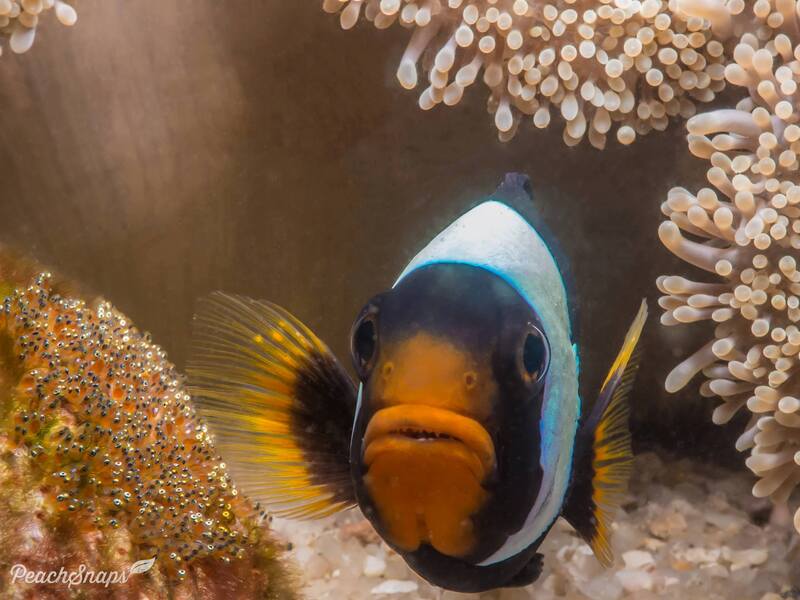
Appearance and Habitat
The saddleback anemonefish gets its name from the distinct white “saddle” marking on its back. Its body is mostly black, with a bold white bar across its head and another saddle-shaped white patch near the dorsal fin. Juveniles tend to be more orange and yellow, but they develop darker coloring as they mature. Their fins are usually tinged with orange, adding to their visual appeal.
These clownfish are native to the Indo-Pacific region, from Thailand to Indonesia and up to the Philippines. They inhabit shallow coral reefs, lagoons, and seagrass beds, where they form close symbiotic relationships with anemones. They typically reside in depths of up to 30 meters but are often found closer to the surface in sheltered, sandy areas.
Symbiosis with Anemones
Like all clownfish, saddleback anemonefish have a remarkable relationship with sea anemones. They find refuge in the tentacles of the anemone, which provides them protection from predators. In return, the clownfish keep the anemone clean by removing debris and offering nutrients in the form of waste. This symbiotic relationship is mutually beneficial and essential to the clownfish’s survival.
The saddleback clownfish is most commonly associated with the carpet anemone (Stichodactyla haddoni). Unlike other clownfish species that might prefer bubble-tip or other anemones, the saddleback has a strong affinity for the wide, sticky tentacles of the carpet anemone, which provide a large area for both the fish and its offspring to hide.
Behavior and Diet
Saddleback anemonefish are omnivores. Their diet includes small crustaceans, plankton, and algae. They are highly territorial and will aggressively defend their anemone home from intruders, whether it’s other fish or even divers. Their feisty nature can make them fun to observe, particularly when they dart in and out of their host anemone.
In their natural habitat, they live in pairs or small family groups. Interestingly, like other clownfish species, saddlebacks are sequential hermaphrodites. The largest and dominant individual in a group is always the female, and if she dies, the largest male will change sex to take her place.
Funny Stories About Saddleback Anemonefish
Divers who encounter these clownfish often share amusing stories of their bold behavior. Despite their small size, saddlebacks have been known to charge at divers who get too close to their anemone home. One diver recounted an incident in which a particularly feisty saddleback repeatedly bumped into his camera lens while he was trying to take pictures. It seemed that the fish was less concerned about its safety and more intent on driving the diver away from its territory!
In aquarium settings, saddleback clownfish often develop quirky personalities. One aquarium owner shared a story of how their saddleback became obsessed with moving bits of gravel around the tank, often to the point of blocking its own entrance to the anemone. Every time the owner would clear the gravel, the clownfish would immediately start piling it back up!
Importance in the Ecosystem
Saddleback anemonefish, like other clownfish, play an important role in the health of coral reef ecosystems. Their relationship with sea anemones not only provides them with protection but also benefits the anemone by keeping it clean and preventing overgrowth of harmful algae or parasites. Additionally, their presence can attract other species of fish and marine life, promoting biodiversity in the reef.
Fun Facts About Saddleback Anemonefish
- Color Change: Juveniles start out bright orange but darken to black as they mature.
- Territorial Nature: Despite their small size, saddleback anemonefish can be quite aggressive in defending their territory.
- Anemone Bond: These fish are particularly fond of carpet anemones, which provide them with extra-large homes to hide in.
- Gender Swap: Like other clownfish, saddlebacks can change sex, with the dominant male becoming female if the current female dies.
Final Thoughts
The saddleback anemonefish is a captivating species that adds color and life to any reef or aquarium. Its unique symbiotic relationship with anemones, bold personality, and striking appearance make it a standout among clownfish species. Whether you’re observing them in the wild or enjoying them in your home aquarium, the saddleback anemonefish is a delightful species to watch.
Check out our next article about: Risbecia Tryoni
Frequently Asked Questions About the Saddleback Anemonefish (Amphiprion polymnus)
What is the Saddleback Anemonefish?
The Saddleback Anemonefish, also known as the Saddleback Clownfish or Yellowfin Anemonefish, is a distinctive species of anemonefish recognized by its unique white “saddle” marking on its back. Scientifically named Amphiprion polymnus, this species forms a mutualistic relationship with sea anemones, gaining protection from predators while providing the anemone with cleaning and nutrients.
Where is the Saddleback Anemonefish found?
This species inhabits the Indo-Pacific region, including areas from Thailand to Indonesia and up to the Philippines. They are commonly found in shallow coral reefs, lagoons, and seagrass beds, typically at depths of up to 30 meters.
What is the typical size and appearance of the Saddleback Anemonefish?
Saddleback Anemonefish can grow up to 13 cm (approximately 5 inches) in length. They have a predominantly black body with a bold white bar across the head and a saddle-shaped white patch near the dorsal fin. Juveniles often display more orange and yellow hues, which darken as they mature.
What anemone species does the Saddleback Anemonefish associate with?
This clownfish species is most commonly associated with the Carpet Anemone (Stichodactyla haddoni) and, less frequently, with the Sebae Anemone (Heteractis crispa). These anemones provide shelter and protection for the fish, while the fish, in turn, helps keep the anemone clean.
What is the diet of the Saddleback Anemonefish?
Saddleback Anemonefish are omnivorous. Their diet includes small crustaceans, plankton, and algae. In captivity, they can be fed a variety of foods, including brine shrimp, mysis shrimp, chopped seafood, and high-quality commercial fish food pellets.
Are Saddleback Anemonefish aggressive?
While generally peaceful, Saddleback Anemonefish can exhibit territorial behavior, especially when defending their host anemone. They may become aggressive towards other fish that encroach upon their territory.
Can Saddleback Anemonefish be kept in home aquariums?
Yes, they can be kept in home aquariums. A minimum tank size of 30 gallons is recommended. Providing a host anemone, such as Stichodactyla haddoni, can help replicate their natural environment, but it’s not strictly necessary. They thrive in tanks with stable water parameters and plenty of hiding spots.
What is the reproductive behavior of the Saddleback Anemonefish?
Saddleback Anemonefish are sequential hermaphrodites, meaning they are born male and can change to female later in life. The dominant individual in a group becomes the female, while the next in line becomes the breeding male. They lay eggs on flat surfaces near their host anemone, and both parents guard and care for the eggs until they hatch.
What threats do Saddleback Anemonefish face in the wild?
Their primary threats include habitat destruction, pollution, climate change, and overfishing for the aquarium trade. Additionally, bleaching of their host anemones due to rising sea temperatures can impact their survival.
Are there any unique behaviors exhibited by the Saddleback Anemonefish?
Yes, they have a distinctive “bobbing” swimming motion and can rapidly change their coloration based on their environment or host anemone. They also communicate using popping sounds, chirps, and chattering noises to maintain social order within their groups.



